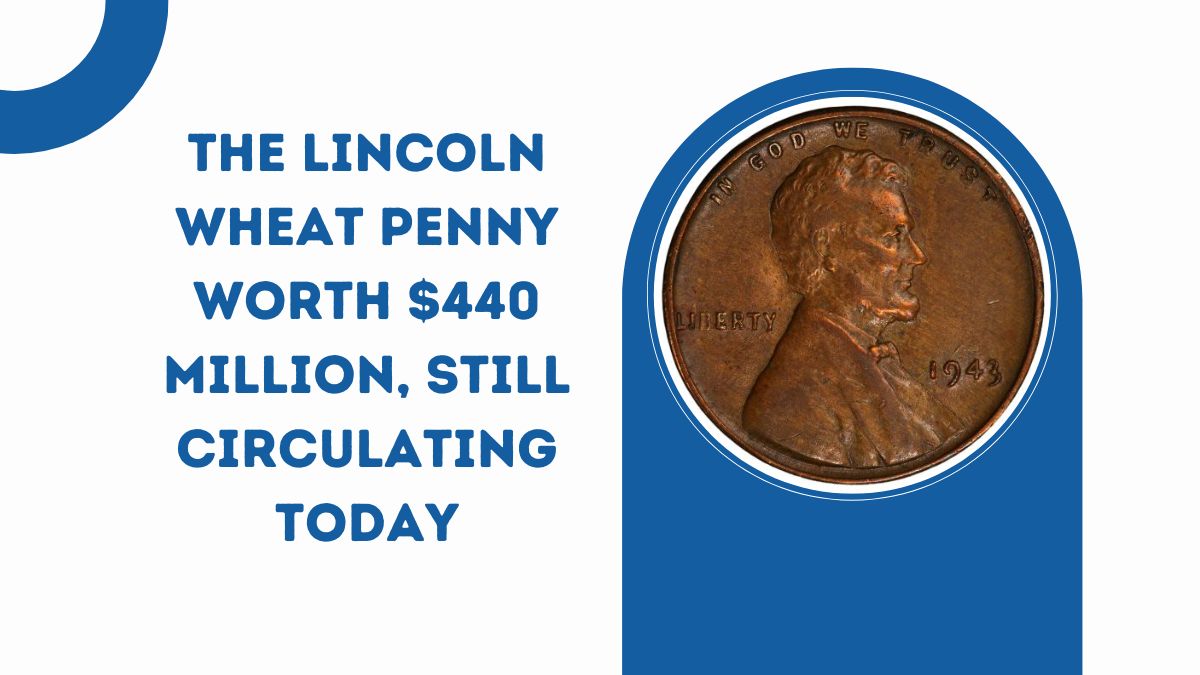The allure of discovering a rare and valuable coin in everyday pocket change captivates both seasoned numismatists and casual enthusiasts. Among such tales, the Lincoln Wheat Penny purportedly valued at $440 million stands out, sparking intrigue and skepticism alike.
This article delves into the origins of this claim, examines the most valuable Lincoln Wheat Pennies known, and offers guidance on identifying potentially valuable coins.
The Genesis of the $440 Million Valuation
The assertion that a Lincoln Wheat Penny holds a value of $440 million appears to stem from online articles and social media discussions.
However, upon closer examination, there is no substantiated evidence or auction records to support such an astronomical valuation for any single penny.
This figure likely serves as a hyperbolic expression to underscore the potential high value of rare coins rather than representing a factual assessment.
Notable High-Value Lincoln Wheat Pennies
While the $440 million penny remains a myth, certain Lincoln Wheat Pennies have indeed fetched impressive sums due to their rarity and unique characteristics. Below is a table highlighting some of the most valuable specimens:
| Year | Mint Mark | Variety | Notable Features | Approximate Auction Value |
|---|---|---|---|---|
| 1909 | S | VDB | Designer’s initials; low mintage of 484,000 | Up to $168,000 |
| 1943 | D | Bronze (Copper) | Minted on bronze planchet during steel penny production | $840,000 |
| 1955 | None | Double Die Obverse | Prominent doubling of date and lettering | Up to $20,000 |
1. 1909-S VDB Penny
This coin features the initials of designer Victor David Brenner (“VDB”) on the reverse and was minted in San Francisco with a limited run of 484,000, making it highly sought after by collectors.
2. 1943-D Bronze Penny
During World War II, pennies were primarily minted in zinc-coated steel to conserve copper. However, a few were mistakenly struck in bronze. The Denver-minted 1943-D bronze penny is exceptionally rare and has commanded prices as high as $840,000 at auction.
3. 1955 Double Die Obverse Penny
A minting error resulted in noticeable doubling of the date and inscriptions on the obverse, creating a distinct and collectible variety. Well-preserved examples can fetch significant sums.
Identifying Valuable Lincoln Wheat Pennies
To determine if you possess a valuable Lincoln Wheat Penny, consider the following factors:
- Date and Mint Mark: Rare combinations, such as the 1909-S VDB or the 1943-D bronze, are particularly valuable.
- Minting Errors: Look for anomalies like the 1955 double die obverse, where design elements appear duplicated.
- Condition: Coins in uncirculated or mint condition are more valuable than those showing significant wear.
- Material Composition: During certain years, composition changes occurred. For instance, authentic 1943 pennies should be steel; any copper examples from that year are rare errors.
The narrative of a Lincoln Wheat Penny valued at $440 million captivates the imagination but lacks substantiation. Nonetheless, certain Lincoln Wheat Pennies possess considerable value due to their rarity, historical significance, and unique characteristics.
Collectors and enthusiasts should remain vigilant, as these treasures can occasionally be found in the most unexpected places.
FAQs
Is there really a Lincoln Wheat Penny worth $440 million?
No, there is no verified record of any Lincoln Wheat Penny being valued or sold for $440 million. This figure appears to be an exaggeration without factual basis.
How can I tell if my 1943 penny is valuable?
Authentic 1943 pennies were made of steel. To test, use a magnet; if it sticks, it’s steel and common. If it doesn’t, it might be a rare copper error, warranting further evaluation by a professional.
Are Lincoln Wheat Pennies still found in circulation?
While increasingly uncommon, Lincoln Wheat Pennies do occasionally surface in circulation, particularly in older coin rolls or collections.
Where can I have my penny appraised?
Reputable coin dealers, numismatic societies, or professional grading services like the Professional Coin Grading Service (PCGS) or Numismatic Guaranty Corporation (NGC) can provide accurate appraisals.
